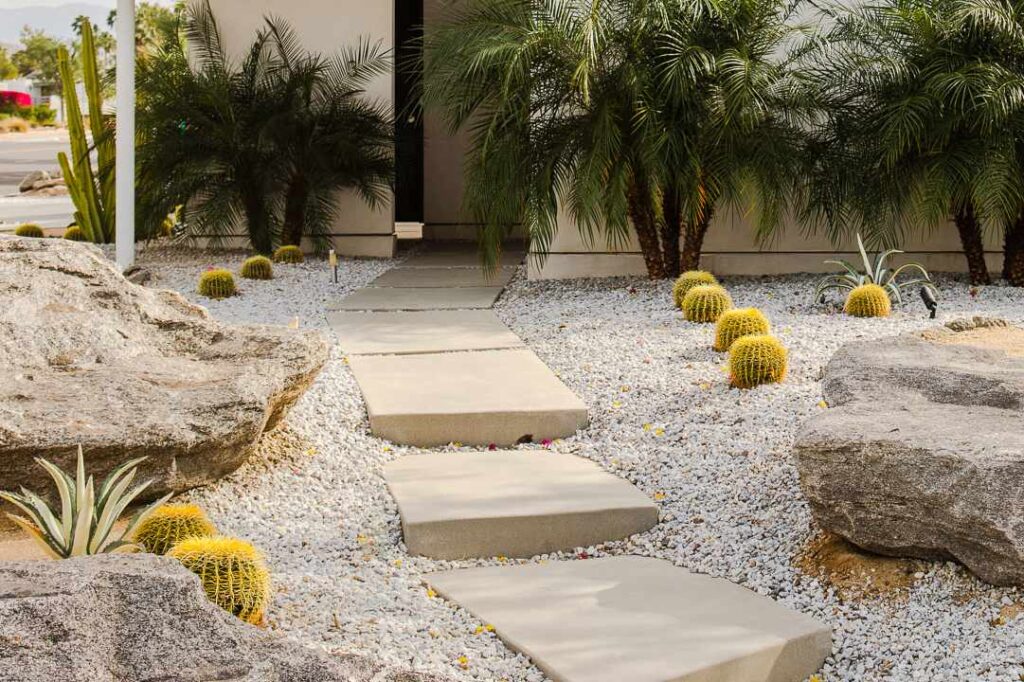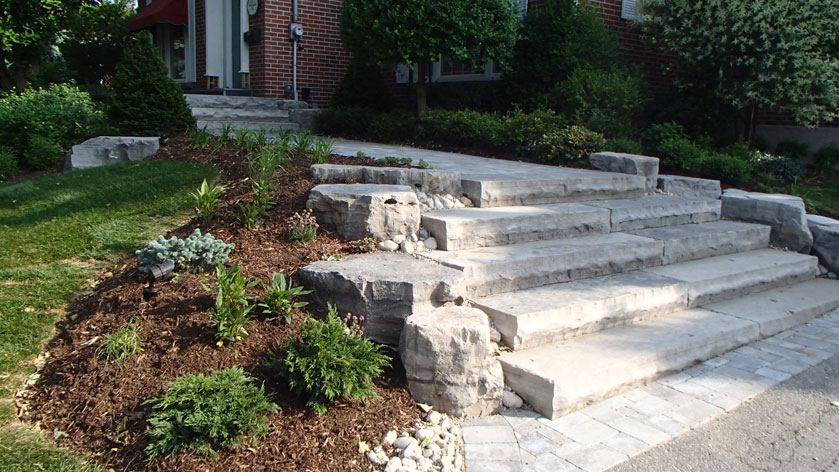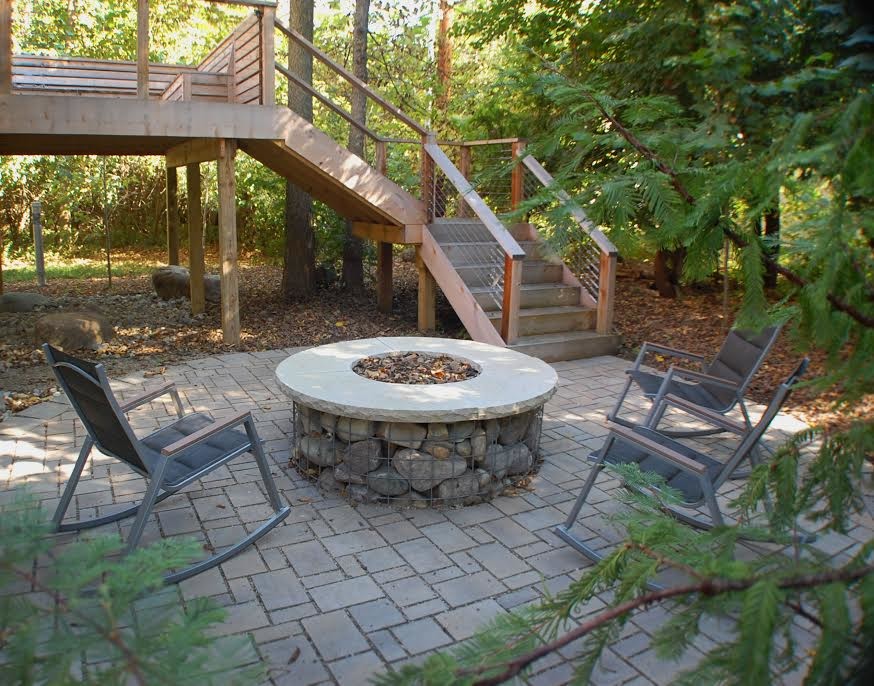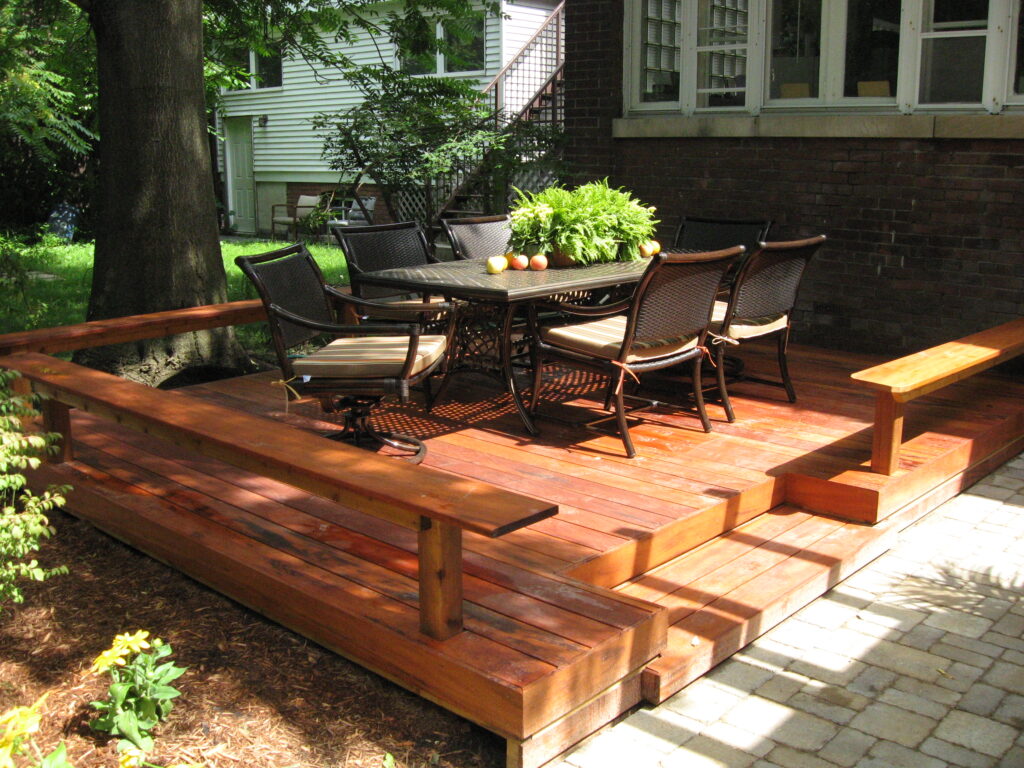Pergolas are very versatile. Depending on the material it is made from and where it is placed in the garden, it can go from a functional, basic structure to a unique piece of character. Additional amenities range from lighting, ceiling fans, and adjustable overhead partitions to entertainment systems, fire features, and outdoor kitchens.

What is a pergola?
The design of the classic pergola is deceptively simple. It consists of four columns supporting four girders or a mix of beams and rafters around the top perimeter of the structure. Slate or lattice roofs provide filtered shade.
Pergolas are shaped like gazebos and are traditionally covered with vines or climbs. The main difference between the two structures is their size. Since a pergola is designed as a space to stay rather than a space to pass through, it is usually much larger and similar in size to a pavilion or arbor. Think of it as a hybrid of garden structures.
Whom to hire ?
For most homeowners, adding a custom pergola will require hiring a landscaper, designer, or contractor. Even if you use a pergola kit, hiring a contractor is a good option. For more extensive landscaping projects, find a landscape architect or designer. Although the cost is higher, a professional can help you finalize your plan, including the best way to provide the right combination of sun and shade.
A landscaping professional will also analyze the proposed site and perform any necessary preparatory work, get permission, mark water, gas and power lines and coordinate workers. Adding electricity to lights and fans requires a licensed electrician. You will need to hire a professional to install gas and plumbing. Installing your entertainment system may require professional help.
Before choosing a professional for your pergola project, make sure he or she has experience building the type of pergola you want. As with any project, check reviews on places like RDKHardscaping, ask for references, and see examples of their work.
Professional DIYers can order pergola plans or kits that include pre-cut parts. If you choose a kit, make sure the materials are suitable for your climate and site conditions. Know your tools and level of expertise before considering this route. In addition to construction, you’ll also need to perform other footwork, including obtaining permits, preparing the site, and inspecting gas and plumbing. Most of the work is performed on top of the pergola, so it is important to stay safe while working in the overhead area.
Find a landscape designer or landscape contractor near you on RDKLandscaping.
Pergola design considerations
Pergolas can be incorporated into almost any area of your landscaping and can be used for a variety of purposes. You can also customize it to suit your personal style and preferred materials. Here are a few things to consider when adding a pergola to your yard.

Where it will go?
Consider placing your pergola where it best suits your needs. Create a retreat or secondary dining or sitting area that gazes at starry views, catches the summer breeze, and provides shade in a yard that’s too hot.
Pergolas can also add a sense of closure to a hot tub or spa while keeping the space open to the landscape. Placing a pergola at the end or next to the pool provides a comfortable space to relax and avoid direct sunlight.
You can also add a pergola as part of a larger deck or patio project, as a free-standing structure, or attached to one side of a home or other structure. Use a pergola on a larger deck or patio to define a dining area or outdoor kitchen, create a conversation area, or add afternoon shade.
Size
Once you’ve decided how you’ll use your pergola, you’ll need to decide on its size. If you plan to use the space for lounging or dining, make sure there is enough space for you and your guests to be comfortable.
To learn more about pergola sizing, see Key measurements for the perfect patio design

Depending on your needs and where you live, you may want to consider adding amenities like lights, fans, and mounted heaters. Other options include permanent seating including swings and gas and electric lines for features like a fire pit or spa. Keep in mind that these features may increase the overall cost and installation time of your project.
Pergola material options
The final option is pressure treated lumber. Although these products are generally inexpensive and easy to work with, people may be concerned about using chemically treated materials to extend their lifespan.

Vinyl and fiberglass
High-quality custom vinyl pergolas and vinyl pergola kits are readily available and are an excellent choice for creating a traditional look at an affordable price. Vinyl pergolas have a very long lifespanand are relatively maintenance-free, so you only need to clean them annually to keep them looking good.
Vinyl pergolas are available in limited colors mainly shades of white and cannot be painted. Their light weight limits their overall length and can sag when snow accumulates. They are usually free- standing, but some companies offer the option of attaching them to your home.
Whether you choose a kit or a custom build, fiberglass pergolas are less common than their vinylcousins, but they share maintenance requirements. It’s also one of the more expensive choices, but its lower long-term maintenance costs make up for the initial cost. They can be freestanding or attached and have a much wider range of styles and color choices than vinyl options. Painting is also possible. It’s still lightweight but much stronger than vinyl. This is especially true if there is accumulated snow.
Metal
For a clean, modern look that will last for years, consider a pergola made of aluminum or steel with a rust-resistant finish. Your options include both custom designs and pergola kits. If you choose the latter, make sure it is of good quality to achieve the long lifespan that is the hallmark of these materials. Pergolas of either material can be free-standing or attached to the house.
Aluminum has excellent resistance to rust, making it ideal for coastal areas. Prices are higher than vinyl, but are usually the same or lower than wood prices. One thing you need to know about aluminum pergolas is that they are light in weight, so they should be well anchored in windy areas.
Steel is heavier, so it is stronger and less affected by weather. Additionally, it can be expanded toa greater distance without supports, making it advantageous for large-scale installations. This corresponds to the highest level of material costs.
Both materials are sturdy, very low-maintenance, and are a good choice for a variety of climates. Clean finished steel or aluminum with a non-corrosive cleaner once a year. This is also a good time to check that the pergola’s connections have not come loose.
Other considerations for adding a pergola
Permits and codes
Check with your local building department (Add Support Links) for permitting and code
requirements before beginning your pergola project. In general, small structures under 100 square
feet may not require permits, but there may still be regulations that affect overall height and where
they can be built. You should also check the location of gas, water, and power lines before leveling
the ground or digging the foundation.
If you are part of a homeowners association, check for any guidelines or restrictions regarding
location, size, materials or finishes.
Secure the pergola
No matter what material or style your pergola is made of, you need to make sure the posts are
securely anchored to the ground. Pergolas and concrete slabs on decks can be secured with
fasteners specifically designed for that purpose. For other surfaces, including pavers, the poles
must be installed into the ground. This involves pouring a concrete floor or installing anchors in a
foundation that can literally be screwed into the ground. If you live in an area that experiences
freeze-thaw cycles, you should install poles below the freeze line. An experienced landscape
contractor can handle all of these installation tasks.
When should I do this project?
As with all outdoor projects, the best time to build is when the weather is nice, from spring through
fall.
How long will it take?
Depending on the complexity and preparation required, including setting a concrete foundation,
staining materials or finishing time, it can take about a week to build a basic pergola once you have





магазин аккаунтов https://birzha-akkauntov-online.ru
продать аккаунт профиль с подписчиками
площадка для продажи аккаунтов https://magazin-akkauntov-online.ru/
продажа аккаунтов соцсетей аккаунт для рекламы
купить аккаунт с прокачкой заработок на аккаунтах
маркетплейс аккаунтов соцсетей магазин аккаунтов
гарантия при продаже аккаунтов https://pokupka-akkauntov-online.ru/
Ready-Made Accounts for Sale Accounts marketplace
Account Trading Service Buy accounts
Account Store Account Store
Account Selling Platform Account Exchange Service
Sell Account Buy Account
Accounts market Account Sale
Website for Selling Accounts Profitable Account Sales
Guaranteed Accounts Account Store
Account Buying Platform Account Selling Platform
Accounts for Sale socialmediaaccountsale.com
account purchase find accounts for sale
secure account sales https://bestaccountsstore.com
buy account account selling service
marketplace for ready-made accounts accounts for sale
accounts market marketplace for ready-made accounts
account acquisition database of accounts for sale
sell accounts socialaccountsdeal.com
sell account profitable account sales
account trading service discountaccountsmarket.com
ready-made accounts for sale https://socialaccountsshop.com/
account trading platform account exchange
account trading buy and sell accounts
database of accounts for sale website for buying accounts
account catalog online account store
account exchange service secure account purchasing platform
account trading profitable account sales
account buying platform database of accounts for sale
sell pre-made account database of accounts for sale
account trading platform account buying service
purchase ready-made accounts account market
account buying service account marketplace
account buying platform account trading platform
account market sell accounts
buy pre-made account find accounts for sale
guaranteed accounts account selling platform
marketplace for ready-made accounts https://top-social-accounts.org/
marketplace for ready-made accounts buy accounts
account buying platform https://accounts-offer.org
profitable account sales https://accounts-marketplace.xyz
sell account https://social-accounts-marketplaces.live/
buy account https://accounts-marketplace.live
accounts marketplace accounts marketplace
guaranteed accounts https://buy-accounts.space
marketplace for ready-made accounts https://buy-accounts-shop.pro/
website for buying accounts https://buy-accounts.live
account market https://accounts-marketplace.online
account purchase https://social-accounts-marketplace.live/
buy pre-made account https://accounts-marketplace-best.pro
маркетплейс аккаунтов akkaunty-na-prodazhu.pro
купить аккаунт rynok-akkauntov.top
биржа аккаунтов kupit-akkaunt.xyz
маркетплейс аккаунтов https://akkaunt-magazin.online
продать аккаунт akkaunty-market.live
площадка для продажи аккаунтов kupit-akkaunty-market.xyz
площадка для продажи аккаунтов https://akkaunty-optom.live
продажа аккаунтов online-akkaunty-magazin.xyz
маркетплейс аккаунтов соцсетей https://akkaunty-dlya-prodazhi.pro/
маркетплейс аккаунтов https://kupit-akkaunt.online
facebook account buy https://buy-adsaccounts.work
buy facebook accounts cheap buy fb ad account
buy old facebook account for ads buy fb ad account
facebook ads account buy https://buy-ads-account.click
facebook ads accounts facebook account buy
buy ad account facebook https://buy-ads-account.work/
facebook accounts for sale https://ad-account-for-sale.top
facebook ads account buy https://buy-ad-account.click/
buy facebook ad account https://ad-accounts-for-sale.work
buy google ads invoice account buy google ad threshold account
google ads account for sale https://buy-ads-accounts.click
facebook account buy https://buy-accounts.click
buy google agency account https://ads-account-for-sale.top
buy google ad account https://ads-account-buy.work
buy old google ads account buy google adwords account
sell google ads account https://buy-account-ads.work
buy google ads threshold account https://buy-ads-agency-account.top
buy google ads account https://sell-ads-account.click
buy google adwords accounts https://ads-agency-account-buy.click
buy verified facebook https://buy-business-manager.org/
buy google adwords account https://buy-verified-ads-account.work
facebook bm account https://buy-bm-account.org/
facebook verified business manager for sale https://buy-verified-business-manager-account.org/
business manager for sale buy-verified-business-manager.org
facebook verified business manager for sale buy-business-manager-acc.org
buy facebook business account https://business-manager-for-sale.org/
fb bussiness manager buy-business-manager-verified.org
buy fb bm https://buy-bm.org
facebook verified business manager for sale https://buy-business-manager-accounts.org
tiktok ads account for sale https://buy-tiktok-ads-account.org
buy verified facebook business manager https://verified-business-manager-for-sale.org
tiktok ads agency account https://tiktok-ads-account-buy.org
buy tiktok ad account https://tiktok-ads-account-for-sale.org
buy tiktok ads buy tiktok ads
tiktok ad accounts https://buy-tiktok-ad-account.org
buy tiktok ads account https://buy-tiktok-ads-accounts.org
tiktok ads agency account https://tiktok-ads-agency-account.org
buy tiktok ads account https://buy-tiktok-business-account.org
buy tiktok ads account buy tiktok ads
металлический шкаф в паркинг для хранения металлический шкаф в паркинг для хранения .
стоимость аренды экскаватора в москве стоимость аренды экскаватора в москве .
facebook ad account for sale accounts for sale account acquisition
buy facebook ads manager website for selling accounts accounts marketplace
дни работы стоматологии дни работы стоматологии .
купить багги в нижнем новгороде взрослый купить багги в нижнем новгороде взрослый .
строим дома под ключ строим дома под ключ .
строительные компании по ремонту квартир https://www.remont-kvartir-pod-klyuch-1.ru .
микрозайм микрозайм .
депозит под проценты депозит под проценты .
микро займ микро займ .
Cosmetology office prices Cosmetology office prices .
врач косметолог клиника врач косметолог клиника .
Новости Украины https://gromrady.org.ua в реальном времени. Экономика, политика, общество, культура, происшествия и спорт. Всё самое важное и интересное на одном портале.
Современный автопортал https://automobile.kyiv.ua свежие новости, сравнительные обзоры, тесты, автострахование и обслуживание. Полезная информация для водителей и покупателей.
Строительный сайт https://vitamax.dp.ua с полезными материалами о ремонте, дизайне и современных технологиях. Обзоры стройматериалов, инструкции по монтажу, проекты домов и советы экспертов.
delivery new york freight shipping nyc
Substantially, the post is really the best on this laudable topic. I concur with your conclusions and will eagerly watch forward to your future updates.Just saying thanx will not just be enough, for the wonderful lucidity in your writing.
услуги косметолога услуги косметолога .
оценка компании Москва оценить Москва
vps hosting server rental vps hosting usa
кресло косметолога тележка косметологическая с ящиками на колесах
доставка бетона цена куб бетона саратов
гранулятор стрейч пленки спб производители гранулятор стрейч пленки спб производители .
завод компрессорного машиностроения завод компрессорного машиностроения .
Планируете ремонт https://remontkomand.kz в Алматы и боитесь скрытых платежей? Опубликовали полный и честный прайс-лист! Узнайте точные расценки на все виды работ — от демонтажа до чистовой отделки. Посчитайте стоимость своего ремонта заранее и убедитесь в нашей прозрачности. Никаких «сюрпризов» в итоговой смете!
swot анализ слов https://swot-analiz1.ru
Looking for second-hand? second hand clothes We have collected the best stores with clothes, shoes and accessories. Large selection, unique finds, brands at low prices. Convenient catalog and up-to-date contacts.
русское порно анал порно русские мамки
Want to have fun? sex children melbet Watch porn, buy heroin or ecstasy. Pick up whores or buy marijuana. Come in, we’re waiting
Новые актуальные промокод iherb приложение для выгодных покупок! Скидки на витамины, БАДы, косметику и товары для здоровья. Экономьте до 30% на заказах, используйте проверенные купоны и наслаждайтесь выгодным шопингом.
HBet – Cổng giải trí trực tuyến hàng đầu, quy tụ hàng ngàn trò chơi cá cược thể thao, casino, slot game và bắn cá đổi thưởng. Giao diện mượt mà, bảo mật tuyệt …
Glad to be one of several visitors on this awful internet site : D.
монтаж кондиционера в квартире http://www.kondicioner-obninsk-1.ru .
дорогие натяжные потолки дорогие натяжные потолки .
This information is very important and you’ll need to know this when you constructor your own photo voltaic panel.
I imagine so. Very good stuff, I agree totally.
аукцион курсовых работ писать курсовые за деньги
взять займ онлайн без отказа займы онлайн быстро без отказа
займ онлайн с плохой историей займы на карту онлайн мгновенно без отказа
стоматология недорого и качественно стоматология недорого и качественно .
нотариальный перевод документов переводы текстов бюро
Thanks so much for this, keep up the good work 🙂
coke in prague cocaine prague telegram
pure cocaine in prague cocain in prague fishscale
What a great article.. i subscribed btw!
columbian cocain in prague cocain in prague from peru
pure cocaine in prague cocaine prague telegram
It is perfect time to make some plans for the future and it is time to be happy. I’ve read this post and if I could I want to suggest you some interesting things or suggestions. Perhaps you can write next articles referring to this article. I wish to read more things about it!
high quality cocaine in prague cocaine in prague
coke in prague cocaine prague
If most people wrote about this subject with the eloquence that you just did, I’m sure people would do much more than just read, they act. Great stuff here. Please keep it up.
I like this weblog very much so much great info .
I can’t go into details, but I have to say its a good article!
Нужна лабораторная? выполнение лабораторных на заказ Индивидуальный подход, проверенные решения, оформление по требованиям. Доступные цены и быстрая помощь.
Нужен чертеж? https://chertezhi-kurs.ru выполним чертежи для студентов на заказ. Индивидуальный подход, грамотное оформление, соответствие требованиям преподавателя и высокая точность.
Нужна презентация? https://prez-shablony-ucheb.ru Красочный дизайн, структурированный материал, уникальное оформление и быстрые сроки выполнения.
buy xtc prague cocain in prague from dominican republic
buy weed prague cocain in prague from peru
Hi, do have a e-newsletter? In the event you don’t definately should get on that piece…this web site is pure gold!
Нужна презентация? генератор презентаций по тексту Создавайте убедительные презентации за минуты. Умный генератор формирует структуру, дизайн и иллюстрации из вашего текста. Библиотека шаблонов, фирстиль, графики, экспорт PPTX/PDF, совместная работа и комментарии — всё в одном сервисе.
Проблемы с откачкой? дренажный насос для откачки воды сдаем в аренду мотопомпы и вакуумные установки: осушение котлованов, подвалов, септиков. Производительность до 2000 л/мин, шланги O50–100. Быстрый выезд по городу и области, помощь в подборе. Суточные тарифы, скидки на долгий срок.
сделать значки на заказ москва недорогие значок с логотипом
значки москва на заказ значки под печать
значки на металле москва значки москва на заказ
joszaki regisztracio joszaki
joszaki regisztracio http://joszaki.hu
Nice Post. It’s really a very good article. I noticed all your important points. Thanks.
There most be a solution for this problem, some people think there will be now solutions, but i think there wil be one.
This contained some excellent tips and tools. Great blog publication.
I just couldn’t leave your web site prior to suggesting that I really enjoyed the standard info an individual supply to your guests? Is going to be again continuously in order to inspect new posts
Just want to say what a great blog you got here!I’ve been around for quite a lot of time, but finally decided to show my appreciation of your work!
It is perfect time to make some plans for the future and it is time to be happy. I’ve read this post and if I could I want to suggest you some interesting things or suggestions. Perhaps you can write next articles referring to this article. I wish to read more things about it!
If you are looking to post free classifieds in India online, we highly recommend Xpdea Classifieds. Xpdea is India’s leading free online ads posting site.
If you are looking to post free classifieds in India online, we highly recommend Xpdea Classifieds. Xpdea is India’s leading free online ads posting site.
If you are looking to post free classifieds in India online, we highly recommend Xpdea Classifieds. Xpdea is India’s leading free online ads posting site.
Thanks for posting this. Looking for these resources 😀
Of course, what a great site and informative posts, I will add backlink – bookmark this site? Regards, Reader
Excellent article!! I am an avid reader of your website:D keep on posting that good content. and I’ll be a regular visitor for a very long time!!
Металлообработка и металлы https://j-metall.ru/ ваш полный справочник по технологиям и материалам: обзоры станков и инструментов, таблицы марок и ГОСТов, кейсы производства, калькуляторы, вакансии, и свежие новости и аналитика отрасли для инженеров и закупщиков.
Glad to be one of several visitors on this awful internet site : D.
I’ll check back after you publish more articles.
africain foot telecharger 1xbet cameroun
parier pour le foot 1xbet afrique apk
melbet telecharger https://pari-foot2.com
Τα online καζίνο αποτελούν σήμερα μια από τις πιο δημοφιλείς μορφές ψυχαγωγίας στην Ελλάδα. Η αγάπη των Ελλήνων παικτών για αυτή τη μορφή διασκέδασης μεγαλώνει συνεχώς, και μαζί με αυτή την αύξηση, πολλαπλασιάζονται και οι επιλογές σε διαδικτυακά καζίνο. Αν θέλεις να βρεις τα καλύτερα και πιο ασφαλή καζίνο για να παίξεις, είναι σημαντικό να ξέρεις πώς να ξεχωρίζεις τις αξιόπιστες πλατφόρμες από τις υπόλοιπες. Στο παρακάτω άρθρο θα βρεις χρήσιμες πληροφορίες και συμβουλές για να κάνεις την καλύτερη επιλογή και να απολαύσεις το παιχνίδι με ασφάλεια και διασκέδαση.